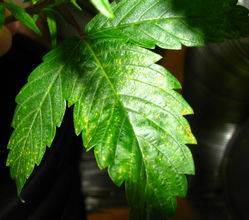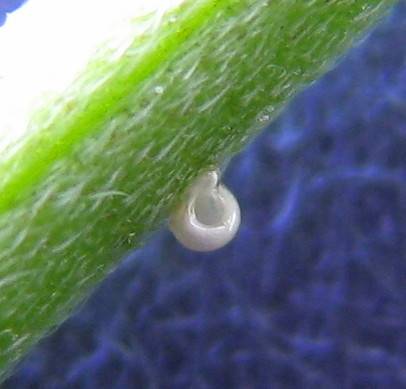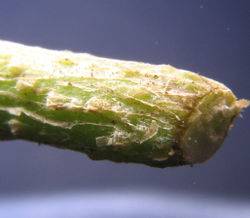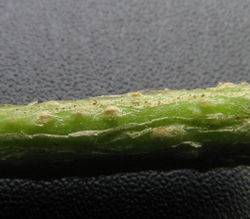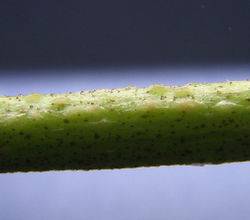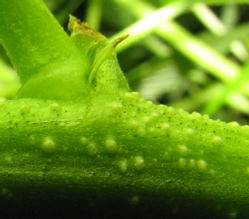G
Guest
I just thought I'd put these pictures up over here in the infirmary. I think this is a scale insect, but I am not sure. Here are a number of pics of damage and a pic of the only evidence I can find on the plants. This was another grow, but this pest still plagues me and I'd like to properly identify it.
This is the only visible evidence I find from time to time on the bottom of leaf stems and on the stalks at times.
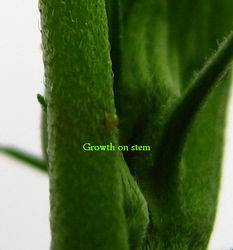
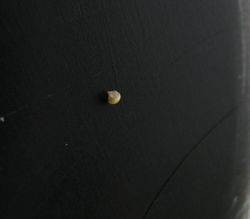
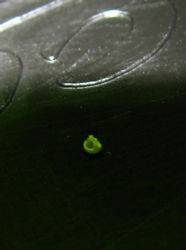
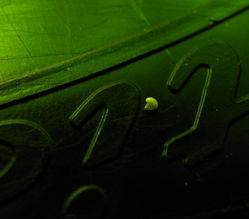

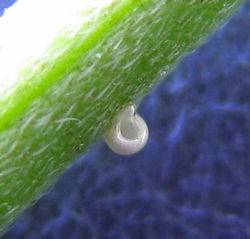
The damage looks like this:


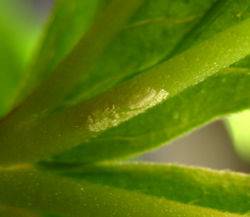
Anyway. There is not another picture that looks like these anywhere on any cannabis forums, nor any discussion of scale insects. At least now it is cataloged here while I continue to try to deal with it.
Last run I used neem one time then dumped almost 15,000 ladybugs during the course of the grow. The ladybugs helped some, but they die off quickly, but while they're active the infestation seems to slow to almost nothing.
Since they haven't licked it last run I'm going to try repeated doses of the neem oil every 4 days for at least a few weeks. I mix the neem with a drop of dish soap to help dispersion. If it is indeed scale multiple applications will be necessary to catch all of the crawlers. Scale's shell protects them from most sprays.
Anyone with any further info on this pest that would like to post it, please feel free.
Here's a piece on scale insects but I don't know if these odd balls with the hole in them fit the descriptions.
Rest of article: http://www.ext.vt.edu/departments/entomology/factsheets/scalein.html
This is the only visible evidence I find from time to time on the bottom of leaf stems and on the stalks at times.





The damage looks like this:

Anyway. There is not another picture that looks like these anywhere on any cannabis forums, nor any discussion of scale insects. At least now it is cataloged here while I continue to try to deal with it.
Last run I used neem one time then dumped almost 15,000 ladybugs during the course of the grow. The ladybugs helped some, but they die off quickly, but while they're active the infestation seems to slow to almost nothing.
Since they haven't licked it last run I'm going to try repeated doses of the neem oil every 4 days for at least a few weeks. I mix the neem with a drop of dish soap to help dispersion. If it is indeed scale multiple applications will be necessary to catch all of the crawlers. Scale's shell protects them from most sprays.
Anyone with any further info on this pest that would like to post it, please feel free.
Here's a piece on scale insects but I don't know if these odd balls with the hole in them fit the descriptions.
Scale Insects
Scale insects are a peculiar group and look quite different from the typical insects we encounter day to day. Small, immobile, with no visible legs or antennae, they resemble individual fish scales pressed tightly against the plant on which they are feeding. There are over l50 different kinds of scales in Virginia. Many are common and serious pests of trees, shrubs, and indoor plants.
Damage
Scale insects feed on plant sap. They have long, threadlike mouthparts (stylets) six to eight times longer than the insect itself. Feeding by scales slowly reduces plant vigor. Heavily infested plants grow poorly and may suffer dieback of twigs and branches. Occasionally, an infested host will be so weakened that it dies.
Control
Adult scales are protected from insecticides by waxy coverings. Control measures, therefore, must be aimed at unprotected immatures (crawlers) or the overwintering stage. Dormant oils are effective on the overwintering stage of most species, but they can only be applied in early spring before leaves appear. During the summer, control requires accurate identification of the pest species so that hatching dates of crawlers can be determined. Once the pest is identified and proper timing known, any one of several common insecticides can be used. Consult your local Extension Agent for current insecticide recommendations.
Armored Scales
Scale insects can be roughly divided into two groups: armored scales and soft scales. Armored scales are so named because they secrete a protective cover over their bodies. Most species overwinter as eggs beneath the female cover. In spring, eggs hatch into tiny mobile crawlers which migrate to new feeding sites. After a few days, crawlers settle, insert their mouthparts, and begin feeding. Soon they secrete a protective cover and lose their legs. Large populations can build up unnoticed before plants begin to show visible symptoms. Our most common armored scale pests are described and illustrated below.
Rest of article: http://www.ext.vt.edu/departments/entomology/factsheets/scalein.html

